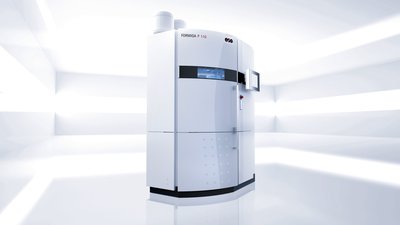SHANGHAI, July 7, 2016 /PRNewswire/ --
Almost all contemporary devices require a circuit board in order to incorporate one or more chips, plus the additionally required electrical components. This creates a network that fulfills a range of tasks, from supplying of electricity, circuitry, through to the output of signals.

(Photo: http://photos.prnewswire.com/prnh/20160627/383497 )
But with contemporary electronic products, the circuitry often has to compete for the limited space within the housing. When conventionally stacked, printed circuit boards (PCB) can no longer accommodate all of the necessary components, so that three-dimensional circuit carriers become the solution of choice. Here again, the ever-shorter life cycles of many devices pose additional challenges: injection molding is far too expensive to manufacture prototypes.
Harnessing Additive Manufacturing technology
For this reason, The German firm of Beta LAYOUT GmbH successfully harnessed EOS technology to manufacture and test the prototypes for three-dimensional circuit carriers: The company uses plastic parts manufactured by 3D printing. The innovation takes place after the printing process itself; once they've been made, the models are coated with a special finish that is furnished with an additive. The subsequent so-called 'laser direct structuring' (LDS) generates layouts, which can be turned into conductor tracks by activating the finish.
"We offer manufacturing of 3D-MID (mechatronic integrated devices) as prototypes for diverse companies," explains Manuel Martin, Product Manager 3D-MID at Beta LAYOUT GmbH. "Working with EOS' FORMIGA P 110, we are in a position to deliver high-quality products to our customers fast. What's particularly practical in all this is that we are even able to deal with orders of 3D models via websites and online shops. Additive manufacturing has enabled us to successfully expand our business model."
Technical changes lead to high level of cost efficiency
Whether for individual developers or large established companies, additive manufacturing ensures that custom-made circuit carriers can be used for the prototypes of new electronic devices. The plastic components can be produced quickly and at an attractive price. The process simultaneously offers the necessary level of precision and high component-quality, allowing the required basic body to be manufactured as if it were already a close-to series product - an aspect that should not be underestimated, particularly with test runs.
The complete customer case study you can find online on the EOS website.
For further information please contact Stephanie Cheong, Marketing Manager EOS Singapore Pte. Ltd. (phone +65 6430 0541, e-Mail: Stephanie.cheong@eos.info).